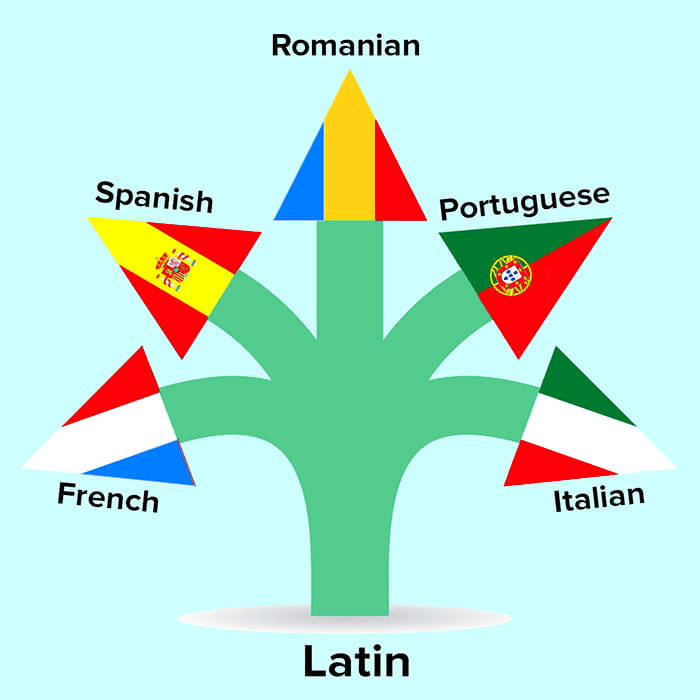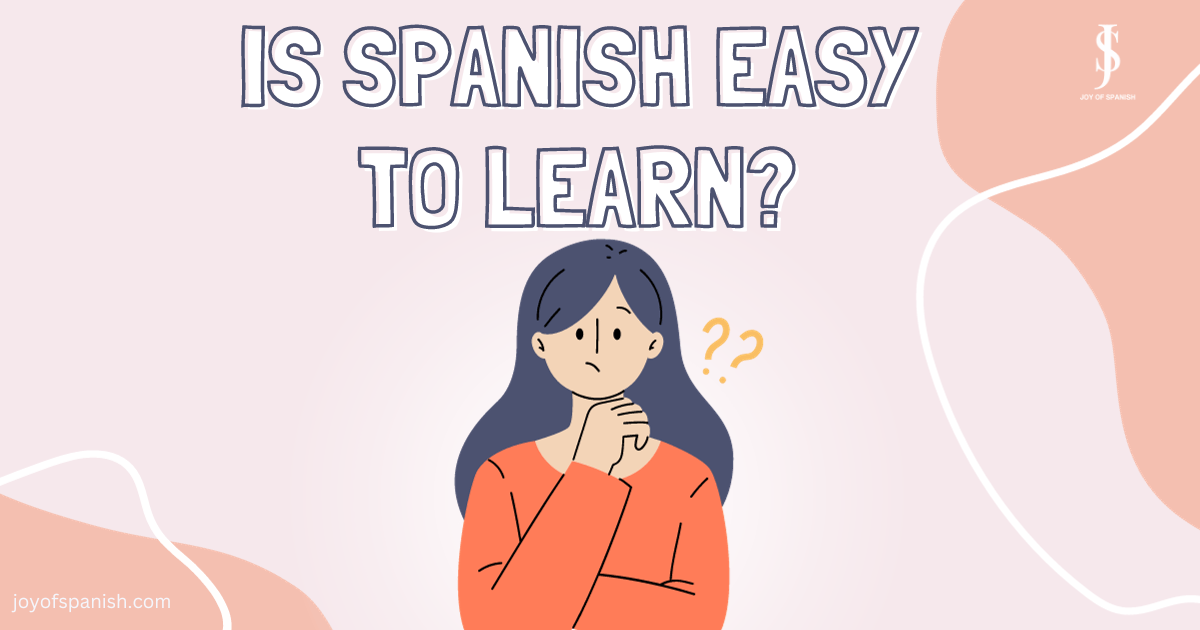Many learners agree Spanish is one of the easiest languages to learn. This is particularly true for English speakers.
Is this really the case?
Spanish is widely accepted as a language that is simple to learn. Studying Spanish has many benefits, like its global presence and importance in business.
As we all know, the language learning process is complex. And Spanish is no exception. How you study, available resources, and many other factors define how straightforward or challenging the language is.
As a result, there is no definitive answer to the question of whether Spanish is easy or difficult to learn.
This article will dive into what makes Spanish easy or hard to learn. So, let’s get started!
Table of Contents
How easy is it to learn the Spanish language?
Spanish is one of the most widely spoken and beautiful languages on the planet. Plus, it is the third most spoken mother tongue. As an outcome, there is a growing interest because of the many benefits of learning Spanish.
As you prepare to explore this language, you may wonder how easy or difficult it is to learn.
Language difficulty can differ depending on prior language experience. Further, it depends on how much time and effort you can spend studying. The availability of help and resources also plays a vital role.
The ability to speak a second language gives you an edge when you try to master Spanish. Likewise, picking up a third language becomes much more painless when you know a second language.

1. Spanish is simple to pronounce
The spelling and pronunciation system of Spanish is constant. The initial stage becomes more manageable with this.
Spanish is broadly a phonetic language.
This means you speak the consonants and vowels the way you write.
As with any language, mastering written and spoken Spanish needs commitment, time, and practice.
The sound of Spanish words looks familiar when you listen to people speaking. Learning becomes more enjoyable and more effortless.
Although Spanish speakers talk fast, complexness differs from speed. Spanish is uncomplicated to pronounce because its sounds and spelling are alike.
With the help of valuable websites and apps for improving Spanish, most primary-level students can learn Spanish online on their own. But as you progress, unique difficulties come with it.
2. Knowing a similar language makes it effortless
This is the most crucial factor that defines a language’s difficulty level.
Your ability to understand Spanish quickly depends on how similar it is to your mother tongue. The reason is their linguistic closeness.
Spanish is part of the Romance language group. Thus, it has common roots with French, Italian, Romanian, Portuguese, etc.
Because of its Latin origins, it shares some likenesses with Germanic family groups. English, Dutch, German, and Scandinavian languages are among the examples.
Knowing a European language with Latin roots makes understanding Spanish effortless. Take advantage of this choice if you want a relatively simple language to learn, yet valuable.
Spanish is a phonetic language that sounds the same as written. You speak the vowels and consonants like we write, except for the letter H.
Spanish has always been a popular choice for English speakers because of its usefulness and broad reach. It’s easy to comprehend because they share many parallels in grammar and vocabulary.
As you progress in your studies, you can compare many Spanish terms and phrases to their English translations.
Although English is a Germanic language, some languages with Latin roots have highly affected it. E.g., French and Spanish.

3. Spanish has straightforward alphabets, words, and grammar
Germanic and Romance are two common language families in Indo-European. Their paths have historically been alike.
A language family that is ‘related’ often has some linguistic proximity. This is especially true for vocabulary.
Spanish uses the Latin alphabet like other European languages. You can quickly understand and speak with simple articulation rules.
Spanish grammar is a must for English speakers to learn. Many topics are unique yet tricky, which learners should focus on.
Spanish nouns agree in gender with their adjectives and articles. Each word has a gender and number, masculine or feminine, singular or plural.
For example, el hijo, the son, is masculine, while la hija, the daughter, is feminine. Likewise, la mesa, the table, is feminine, while el libro, the book, is masculine.
You must also use the proper conjugation to read, write, and speak Spanish correctly.
Spanish grammar has a lot of regularity. Effective communication is possible by learning and following rules and patterns.
Do remember that not all words follow the rules and structure. There are many exceptions.
For example, we use irregular verbs like ‘SER’ and ‘Haber’ in daily speech. Their conjugation differs from regular verbs, so be careful.
Subjunctive mood implies subjectivity and uncertainty. The subjunctive tense poses a challenge for Spanish learners.
This is how you express doubts, possibilities, desires, judgments, and needs. Learning the patterns and rules takes practice, except for a few cases.
4. Access to plenty of resources for Spanish learners
As you might have heard, Spanish is the third most widely spoken native language after Chinese and Hindi. Chinese and Hindi speakers are mainly in China and India. In contrast, Spanish speakers are present worldwide.
Spanish is the official language of 20 countries like Spain, Colombia, Argentina, and Mexico. It has over 500 million speakers.
There is a notable Spanish-speaking population worldwide, including the USA.
In short, there is an enormous number of Spanish speakers. Thus, you can easily find people who know this language.
Spanish is easily accessible resource-wise because of its popularity and widespread. Ample study material is available online, in offline stores, and on free platforms.
You’ll always have various options, including Netflix, Amazon Prime, and other online streaming channels. You can also enjoy songs and podcasts for Spanish learners.
You can consider enrolling at an academic center if you want to learn correctly.
There are plenty of language schools and colleges that offer Spanish classes. This can make learning the Spanish language much easier.
There are plenty of Spanish learning resources, like books, sites, and audio lessons. You can likewise watch TV shows and movies to improve your Spanish. The options are limitless.
What makes Spanish difficult to learn?

Like with any other language, starting is always hard because it is a new language. It requires time and effort to learn Spanish from the beginning. Yet, it can be demanding because of its variety and richness.
Mastering Spanish can be challenging because of its lengthy grammar, endless words, phrases, tenses, and dialects. Coping with its unique features is complex for everyone, whether native or learner.
To learn some of the most essential parts, you must overcome challenges.
- Mastering the subjunctive verb forms is a breeze. But how to use it correctly isn’t very easy. It’s a common challenge for Spanish learners to know when to use them. At times, it’s apparent, but other times not.
- Both verbs “Estar” and “Ser” have the same meaning in English, “to be.” These are two kinds of Spanish language. The non-native speaker needs help in distinguishing between the two. Many other tricky differences exist, like “Para” and “Por.”
- Catching up with accents is vital for learners here. In Spanish, contrary to English, many terms have accents, such as Sofá (Sofa), Qué (What), and Sábado (Saturday). Playing these accents is critical. Once you notice it, you’ll realize it’s not as complex as it seems.
- Different dialects of Spanish are spoken across various regions of Spanish-speaking nations. Most speakers can easily communicate with each other despite the language’s global variations.
- Newbies may find some sounds tricky. To begin with, double R and L, V, Y, G, J, and Ñ might be unknown.
- Idioms are expressions whose meaning changes with translation. So, it’s best not to take them literally. For example, the “Ponerse las Botas” phrase means putting on boots. The meaning varies by region. It’s a way to show that you’ve eaten well.
Don’t quit just because the language isn’t natural for you. Do more research or change your focus if you need help with something.
Keep pushing forward even when you feel stuck in one area. If things are unclear, take a break to start afresh.
Learning Spanish is usually viewed as lengthy, without immersion in a Spanish-speaking environment.
To simulate the immersion experience, one can move to a Hispanic nation. Even without it, you can create a Spanish-learning environment where you live.
It takes a lot of effort to feel at ease expressing yourself in a foreign language. If you engage from the start, your success rate will increase.
You can watch Spanish TV shows for learners, flicks, and videos with subtitles in your mother tongue to learn. It’s advisable to see it with Spanish subtitles, and it’s crucial to put in your best effort from the start.
Other effective ways to improve Spanish include listening to music and podcasts. You can also converse with native speakers and read books.
Does Spanish take a long time to learn?
Ask yourself, what draws you to learning this language?
Learning a language is a complex process. A rational purpose is integral to success, requiring time and effort.
Learning Spanish in a shorter time is possible with some creative methods.
Most learners face the unfortunate reality that speaking good Spanish or being fluent takes a long time. Many have yet to be successful.
You can make fast progress in Spanish if you have passion and curiosity. It’s an improvement over constantly battling to stay motivated to learn.
If you’re motivated, passing an intermediate-level Spanish language examination in a year is possible. To succeed, one must have the right inspiration and time management skills.
If you speak English, estimating the time it will take to learn Spanish is more accessible.
According to research by the US government’s FSI (Foreign Service Institute), Spanish is classified as a category I language. This group is known for being the easiest and most similar to English.
To reach advanced proficiency levels, such as C1 of the SIELE and DELE tests, you need 600 hours of classroom study. The number of weeks depends on how many hours you study every week.
You need 1200 hours for a higher level with a recommended 1:1 self-study and class ratio. By studying 15-20 hours a week, you can achieve your goal within 18 months.
You can gain it in one year by taking an intensive Spanish language course near you. Getting accustomed to the structures of a new language takes time.
We often omit personal pronouns, which can help explain Spanish tenses. Hearing and reading enough Spanish is the only way to master these new structures.
It’s vital to have a clear vision of the result when learning. For example, you can improve your Spanish by reading books and watching TV series or films.
Even if it’s not perfect initially, these activities will help enhance your language skills.
Final Words: Is Spanish hard?

Speaking Spanish can lead to success in your personal and professional life, opening up a world of opportunities. You can find many jobs related to Spanish.
Various factors contribute to Spanish being an easy language to learn. Despite this, there are some problematic aspects. Regular studying, effort, and hard work are essential for success.
Look at some fantastic language-learning resources. You have the option of finding an experienced teacher or Spanish learning center. You should also try different techniques and see which ones are effective.
Using the correct approach and techniques can help you speak Spanish quickly. Consistent practice and study can help you maintain your language skills over time.
Would you like to ask any questions or express your thoughts? Drop your thoughts in the comments section!











